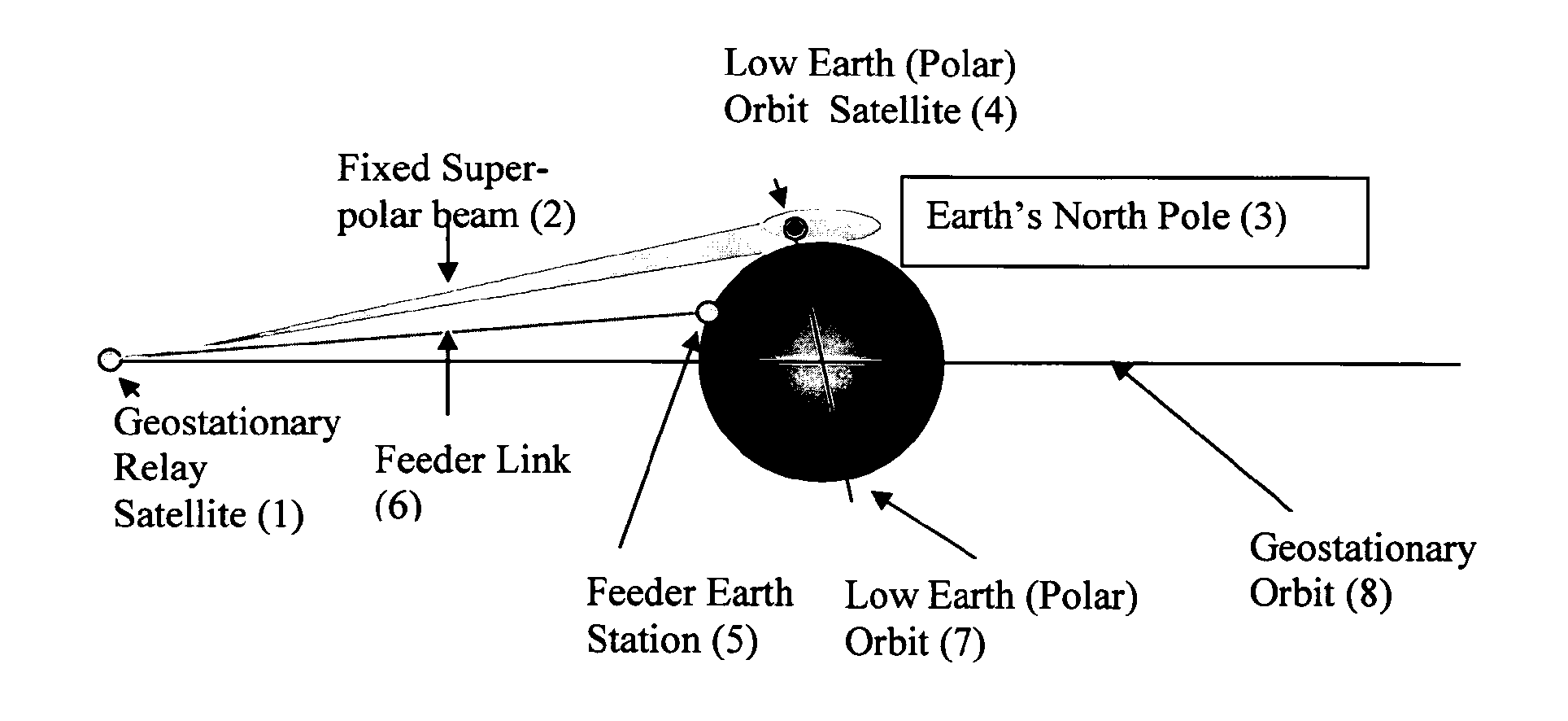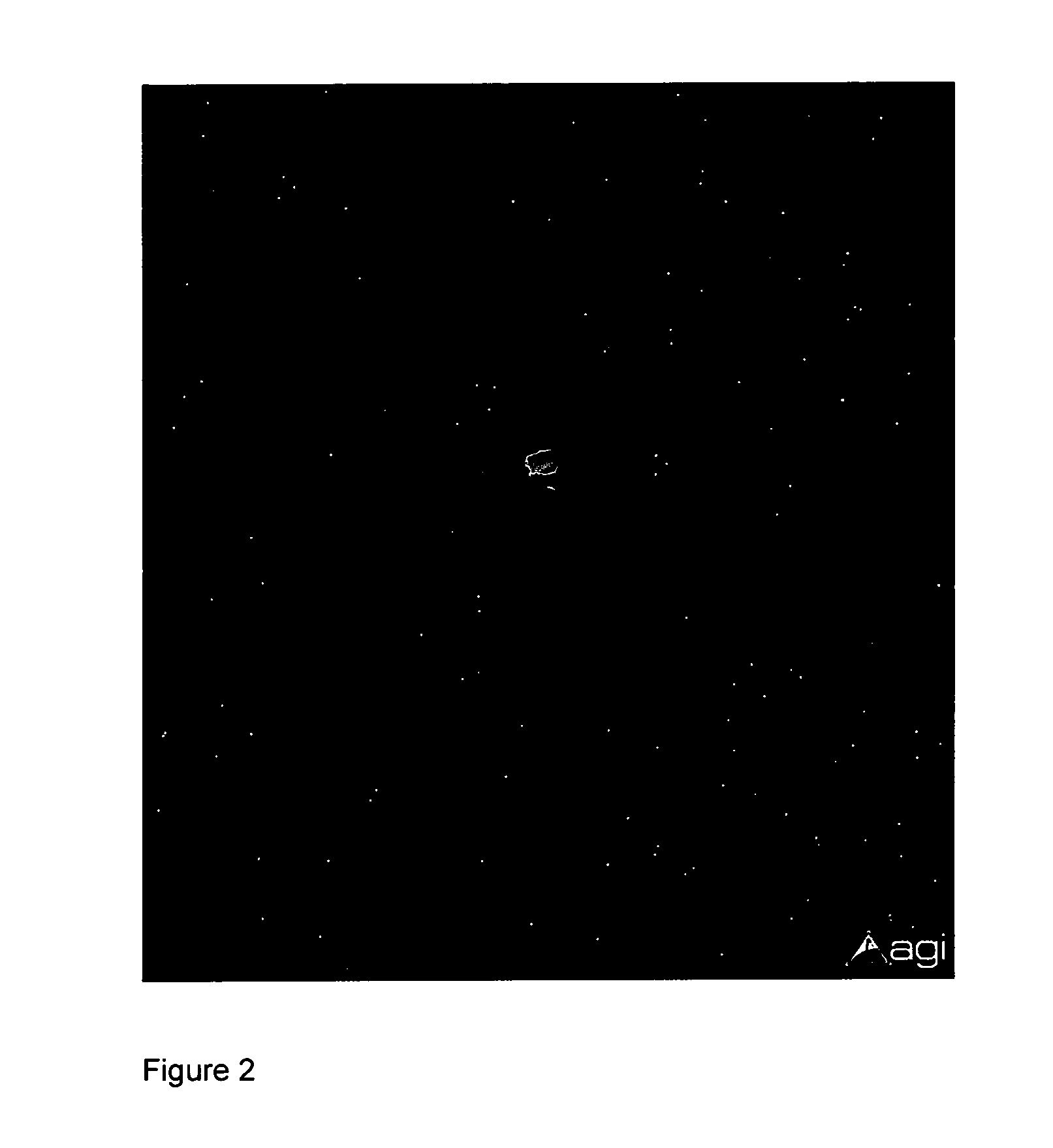Virtual Polar Satellite Ground Station for Low Orbit Earth Observation Satellites Based on a Geostationary Satellite Pointing an Antenna Over an Earth Pole
a geostationary satellite and satellite technology, applied in the direction of radio transmission, electrical equipment, transmission, etc., can solve the problems of not being able to exchange tt&c (telemetry, telecommand & control), not being able to download imagery data or sensor data, and not being able to receive tasking commands
- Summary
- Abstract
- Description
- Claims
- Application Information
AI Technical Summary
Benefits of technology
Problems solved by technology
Method used
Image
Examples
Embodiment Construction
[0066]One embodiment of the invention relates to a satellite constellation. Referring to FIG. 1, the satellite constellation comprises at least one geostationary satellite (1) and at least one low earth orbit satellite (4). The satellite constellation provides communication between a feeder earth station (5) and the low earth orbit satellite (4) even in case that there is no line-of-sight between the feeder earth station (5) and the low earth orbit satellite (4).
[0067]On the geostationary satellite (1) one or more antennas are integrated capable of pointing one at least temporarily one or more fixed super-polar beams (2) to a zone of a super-polar space above the Earth's North Pole (3) (region above the North Pole) through which the orbit (trajectory) of the low earth orbit satellite (4) passes, whereas the one or more fixed super-polar beams (2) cover at least part of the zone.
[0068]The direction of the super-polar beams (2) is fixed at least temporarily with...
PUM
 Login to View More
Login to View More Abstract
Description
Claims
Application Information
 Login to View More
Login to View More - R&D
- Intellectual Property
- Life Sciences
- Materials
- Tech Scout
- Unparalleled Data Quality
- Higher Quality Content
- 60% Fewer Hallucinations
Browse by: Latest US Patents, China's latest patents, Technical Efficacy Thesaurus, Application Domain, Technology Topic, Popular Technical Reports.
© 2025 PatSnap. All rights reserved.Legal|Privacy policy|Modern Slavery Act Transparency Statement|Sitemap|About US| Contact US: help@patsnap.com



